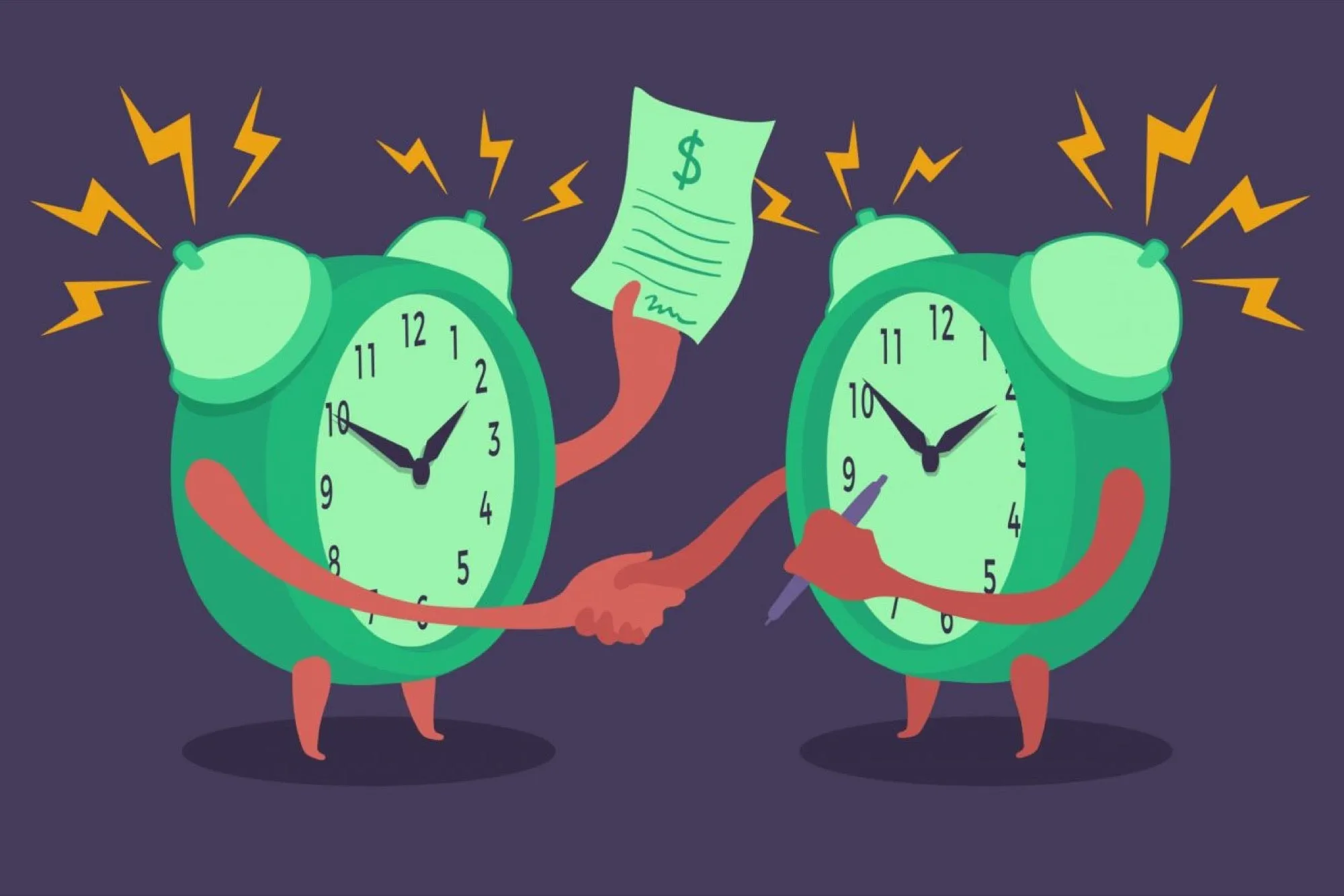Sales closing techniques are strategic methods used by salespeople to convert a prospect into a customer effectively. These techniques involve specific approaches that guide a potential customer through the decision-making process, ultimately leading them to agree to the purchase.
Closing deals faster with sales closing techniques involves leveraging proven strategies that address customer needs and overcome objections efficiently. For example, the "Assumptive Close" technique, where the salesperson assumes that the deal has already been decided, can increase closing rates by up to 30% when applied correctly.
Additionally, employing the "Now or Never Close," which creates a sense of urgency by adding a time limit to the deal, can accelerate decision-making. Research shows that introducing limited-time offers can boost sales by up to 33%.
By implementing the below 10 techniques thoughtfully and adapting them to the sales context and customer profile, sales representatives can significantly shorten the sales cycle and improve their overall efficiency in closing deals.
10 Proven Strategies to Close More Deals Faster

Here's a list of 10 proven strategies to help close more deals faster, providing specific actions rather than general advice:
1. Focus on Lead Qualification
Lead qualification is pivotal in ensuring that sales efforts are directed towards the most promising prospects. By distinguishing between leads that are likely to convert and those that are not, sales teams can optimize their resources and time.
Why It Matters: Statistics show that 67% of lost sales are due to improper qualification before advancing the lead through the sales cycle.
How to Implement:
- Establish Clear Criteria: Define specific criteria that qualify a lead as 'sales-ready' based on demographic, psychographic, and behavioral data.
- Use Lead Scoring: Implement a lead scoring system that assigns points based on how closely a lead matches your ideal customer profile. Focus on leads with the highest scores for direct sales engagement.
2. Implement Structured Sales Playbooks
A structured sales playbook provides a standardized approach to selling that encapsulates successful tactics and strategies. It acts as a guide for sales teams to handle various selling situations.
Why It Matters: Companies with formal sales processes generate up to 18% more revenue than those without. A structured playbook ensures consistency and improves effectiveness in sales execution.
How to Implement:
- Document Successful Sales Processes: Include scripts, handling objections, and follow-up strategies that have proven successful.
- Customize Playbooks by Sales Stages: Develop different playbooks for different stages of the sales process, such as prospecting, presentation, and closing.
3. Regularly Review and Adjust Sales Strategies
The dynamic nature of markets demands that sales strategies be regularly reviewed and adjusted. This strategic flexibility can significantly enhance the ability to close deals faster.
Why It Matters: A study shows that organizations that adapt their sales strategies to market changes can see a 10% higher win rate on sales opportunities.
How to Implement:
- Conduct Quarterly Sales Reviews: Analyze what strategies are working and which are not. Use sales data and feedback from sales teams to inform decisions.
- Implement Feedback Loops: Encourage continuous feedback from sales teams about the ground realities they face, ensuring that the sales strategies are aligned with current market conditions.
4. Accelerate Response Times
Quick response times can be a game changer in closing deals faster. Speed in responding to inquiries and follow-ups shows prospects that their business is valued and that your organization is efficient and responsive.
Why It Matters: Studies indicate that responding to leads within the first hour increases conversion rates by 7 times compared to those who respond later.
How to Implement:
- Utilize Automation Tools: Implement CRM systems that alert you immediately when a lead makes contact.
- Set Clear Response Time Goals: Establish and enforce internal benchmarks for response times, ensuring all team members understand and adhere to these guidelines.
5. Focus on Solution Selling
Solution selling shifts the focus from selling a product to solving a customer's problem. This approach requires understanding the customer's needs deeply and presenting your product or service as the solution to those specific issues.
Why It Matters: By focusing on customer needs, solution selling aligns the product directly with the customer’s pain points, increasing the likelihood of a sale. Statistics show that solution-oriented approaches can improve win rates by up to 30%.
How to Implement:
- Train Sales Teams to Identify Problems: Educate your team on how to ask the right questions to uncover real customer needs during conversations.
- Develop Customized Solutions: Encourage sales representatives to tailor presentations and offerings to address the specific challenges discussed by the prospects.
6. Enhance Sales Training with Role-Playing
Role-playing as a training tool allows sales teams to practice and hone their selling skills in a controlled environment, preparing them for actual sales scenarios they will face.
Why It Matters: Role-playing helps salespeople develop and refine their ability to handle different types of customers and objections, which is crucial for closing deals effectively. It’s shown that role-play can increase closing rates by enhancing salesperson confidence and competence.
How to Implement:
- Regular Training Sessions: Conduct regular role-playing sessions that mimic a variety of sales situations, from initial contact to handling objections and closing the deal.
- Feedback and Coaching: Provide constructive feedback after each session, focusing on areas of improvement and reinforcing best practices seen during role-playing.
7. Utilize Advanced Closing Techniques
Advanced closing techniques involve strategic methods that go beyond standard sales pitches, focusing on creating a compelling reason for prospects to decide promptly. Techniques like the "Puppy Dog Close," where the prospect uses the product on a trial basis, can be particularly effective.
Why It Matters: Advanced techniques, such as the "Sharp Angle Close," where salespeople agree to specific customer requests in exchange for closing the deal immediately, can significantly increase close rates.
How to Implement:
- Train on Multiple Techniques: Ensure your sales team is well-versed in several advanced closing techniques to apply them based on the sales situation and customer behavior.
- Monitor and Adapt: Use sales data to determine which techniques are most effective in different scenarios and refine your approach accordingly.
8. Optimize the Use of Testimonials and Case Studies in Sales Presentations
Testimonials and case studies are powerful tools that provide social proof and illustrate the value of your product or service through real-life examples, making them essential elements of an effective sales presentation.
Why It Matters: 92% of customers read testimonials when considering a purchase. Demonstrating how others have benefited from your product builds trust and credibility, especially when presented to the right decision maker.
How to Implement:
- Showcase Diverse Success Stories: Include a variety of testimonials and case studies that address different use cases and pain points to appeal to a broader audience.
- Strategically Place Testimonials: Integrate testimonials into sales presentations, websites, and proposals where they can have the most impact.
9. Personalize Your Communications to Address Prospect's Pain Points
Personalizing communications involves tailoring messages to meet the specific interests and needs of each prospect, making them feel uniquely understood and valued. Addressing a prospect's pain points directly can be a make or break moment in any sales deal.
Why It Matters: Personalized emails deliver 6x higher transaction rates. Personalization leads to better customer engagement and can significantly impact the sales pipeline.
How to Implement:
- Leverage Customer Data: Utilize data from previous interactions to personalize communications, suggesting products or solutions based on the customer’s past behavior and preferences.
- Use Advanced CRM Tools: Implement CRM software that allows for segmentation and targeted messaging based on detailed customer profiles.
10. Offer Time-Limited Incentives to Drive More Sales
Time-limited incentives create urgency, compelling prospects to act quickly to take advantage of a special offer before it expires. This tactic can be especially effective when conveyed during a sales pitch or when closing a sales deal.
Why It Matters: Offering incentives for a limited time can increase sales by 33%. This tactic leverages the psychological principle of scarcity, prompting quicker decision-making among decision makers.
How to Implement:
- Clearly Define the Time Frame: Make sure the time limit is clearly communicated, reasonable, and creates a genuine sense of urgency.
- Promote Incentives Effectively: Use multiple channels to promote the incentive, ensuring it reaches as many of the target audience as possible within the set timeframe.
How Optimizing the Sales Cycle Can Speed Up Closures

Optimizing the sales cycle is crucial for speeding up sales closures. By making the sales process more efficient, organizations can close deals faster, improve customer satisfaction, and increase revenue. Here are key steps for optimizing the sales cycle:
1. Analyze the Current Sales Cycle
Identify Bottlenecks: Begin by mapping out your current sales cycle to identify where delays typically occur. Are there stages where prospects consistently get stuck or lose interest?
Gather Feedback: Use feedback from the sales team and customers to understand the pain points and inefficiencies in your existing process.
2. Define Clear Sales Stages
Standardize Processes: Break down the sales cycle into clear, manageable stages. Each stage should have specific objectives and actions required to move a prospect to the next phase.
Establish Criteria for Advancement: Define what qualifies a lead to move from one stage to the next. This helps prevent premature or delayed transitions that can cause bottlenecks.
3. Implement Effective Lead Qualification
Enhance Lead Scoring: Utilize lead scoring to prioritize and pursue leads that are most likely to convert. This focuses efforts on high-quality leads, reducing time wasted on less promising prospects.
Use Detailed Lead Profiles: Develop detailed profiles for ideal customers. This helps in targeting and personalizing sales efforts more effectively.
4. Leverage Automation and CRM Tools
Automate Repetitive Tasks: Use automation tools to handle repetitive tasks such as email follow-ups, lead scoring, and data entry. This frees up time for salespeople to focus on selling.
Integrate CRM Systems: Employ CRM systems to maintain detailed records of customer interactions, manage leads, and track progress through the sales pipeline.
5. Train and Equip Your Sales Team
Ongoing Training: Provide regular training to keep your sales team updated on best practices, new tools, and advanced selling techniques.
Equip with Tools: Equip your team with effective sales tools, including mobile sales apps and presentation software, to enhance their productivity and presentation capabilities.
6. Monitor and Refine the Sales Cycle
Regular Reviews: Regularly review the performance of your sales cycle. Use metrics like average time to close, conversion rates, and stage drop-off rates to measure success.
Continuous Improvement: Based on the data collected, continually refine and tweak your sales cycle. Experiment with different strategies to find what works best for your team and market.
7. Enhance Communication and Collaboration
Improve Internal Communication: Ensure that there is excellent communication between marketing and sales teams to maintain a seamless flow of qualified leads.
Collaborate on Feedback: Encourage a culture where sales teams share insights and feedback regularly, fostering continuous improvement and adaptation to changing market conditions.
Negotiation Tactics to Close Sales Deals

Negotiation is a critical skill in closing sales deals. Mastering negotiation tactics not only enhances your ability to close deals more effectively but also helps in building long-term relationships with clients. Here’s a comprehensive guide to key negotiation tactics that can help you close sales deals more effectively:
1. Prepare Thoroughly
Understand Your Client’s Needs: Before entering any negotiation, make sure you fully understand what your client values the most. This might include pricing, service terms, product features, or delivery timelines.
Know Your Limits: Clearly define your walk-away point. Know in advance the lowest terms you can accept, and prepare alternatives to offer if negotiations reach a deadlock.
2. Build Rapport
Personal Connection: Establish a connection with the decision-maker. People prefer to do business with those they like and trust.
Listen Actively: Show genuine interest in understanding the other party’s needs and concerns. This not only helps in building rapport but also provides insights into their priorities and constraints.
3. Leverage the Power of Silence
Pause After Making an Offer: Give the other party time to consider your offer. Silence can be a powerful tool that compels the other side to speak first, potentially revealing more about their position or making concessions.
React With Silence to Counteroffers: If presented with a counteroffer, a pause before responding can signal that you’re considering their position seriously, which might lead to better terms.
4. Use Anchoring
Set the First Offer: Make the first offer, setting an anchor that frames the subsequent negotiations. Ensure your anchor is realistic but gives you room to maneuver.
Counter Anchors Quickly: If the other party sets an anchor that’s too low or high, counter it immediately to prevent it from setting the tone of the negotiation.
5. Employ Tactical Concessions
Plan Your Concessions: Decide in advance what you can offer as concessions and when. Each concession should come at a cost to the other side or as part of a trade for something valuable to you.
Make Your Concessions Gradually: Offer smaller concessions progressively rather than all at once, which can encourage reciprocity from the other side.
6. Implement the “Nibble” Technique
Ask for Small Add-ons: After the main terms are agreed upon, ‘nibble’ for small extras or concessions that aren’t deal-breakers but are valuable to you.
Be Ready for Nibbles: Anticipate that the other side might use this technique and prepare to respond or have minor concessions ready.
7. Frame Benefits Optimally
Highlight Mutual Gains: Focus on how the negotiation can benefit both parties. Position your proposals in a way that highlights the positive outcomes for the other side.
Emphasize Loss Prevention: People are often more motivated by the fear of loss than the prospect of gain. Frame your proposals as solutions that prevent negative outcomes for the other party.
8. Close With Confidence
Summarize Agreed Points: Clearly summarize all agreed-upon points before closing to avoid any misunderstandings.
Propose Closing Steps: Suggest immediate next steps to solidify the agreement and transition smoothly from negotiation to execution.
Concluding Thoughts on Closing Deals Faster in the Sales Process
Concluding our exploration of effective strategies to accelerate deal closures, it's crucial to emphasize the importance of engaging the right person at the right time. Identifying and connecting with decision-makers who have the authority to close sales is fundamental. By focusing your efforts on the right person, you not only streamline the sales process but also enhance the effectiveness of your negotiation tactics and sales presentations.
This targeted approach ensures that your well-prepared pitches and carefully crafted value propositions reach those who are most capable of driving the sales decision forward, thereby maximizing your chances of a faster and successful deal closure.









